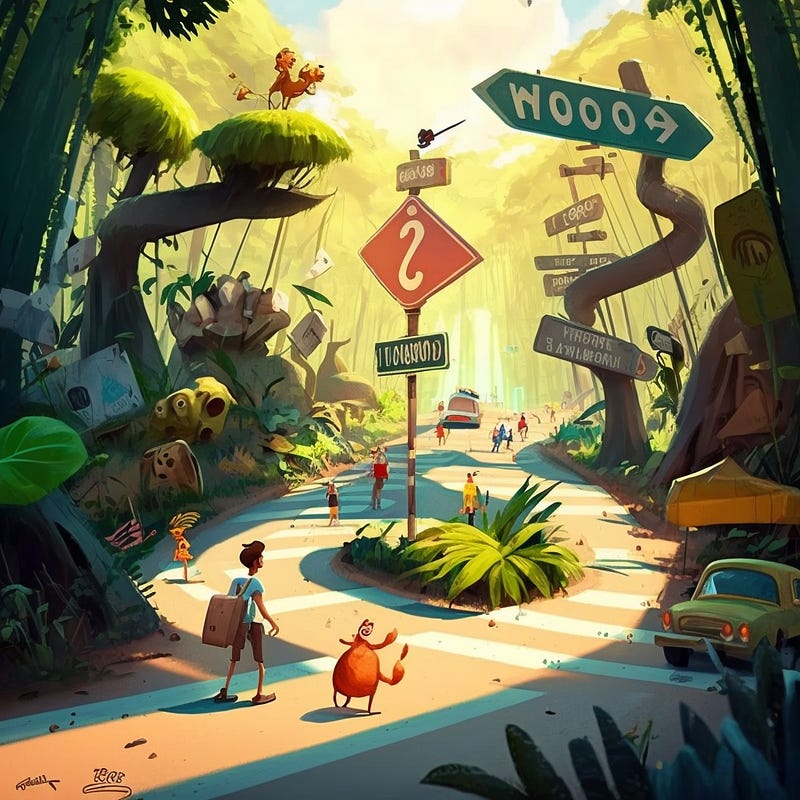UX Management: 5 Lessons On My Design Manger Journey
Are you a product designer considering transitioning into a design management role? Are you a new manager? I share some learnings.
Would I be good at it? What would my role look like? Will I ever design again? Am I abandoning my craft that I’ve worked on for many years? How will this be different? These were all questions I had as I approached my transition from product designer to manager. This was a journey that I knew was not new, but I had so many questions that I struggled to find answers to. I wanted to take a moment to reflect on my journey and experience, in hope that it might be useful for anyone considering starting this journey. That might be you.Here are 5 lessons that I’ve learned through my journey as a design manager:

1. Be Transparent
It’s somewhat ironic that as a designer I struggled with this. After all, one guiding principle in my craft has always been progress, not perfection. Being open with cross-functional partners and showing work in progress was part of my everyday life as a designer. As a manager, it can be easy to fall into the trap of keeping your plans and decisions to yourself until they’re fully formed. During my first few months in management, this is what I struggled with.
First some context. My team expanded in the space of a year from 1 UX Designer to 10 UX Designers and 2 UX Researchers. Something wasn’t working, I didn’t feel overwhelmed with the scale of the team but I physically didn’t have enough time in my calendar to provide my team with the level of attention that I set as a standard. Combining this with “the things” that a design manager does - partner with the organization on strategy & vision, quarterly resourcing plans, hiring, career development conversations, licensing & vendor negotiations. I decided to do a reorg. For a few weeks, I started to pull together resourcing plans and model what the team could look like. Reflecting on this period now, this is where things went wrong. In my team meetings, I had told the team things like: “I know things aren’t working right now, I’m doing some planning around this, hold tight”. I would then chat with peers and leadership as I was refining my plans and knew we had a pretty good vision for the team. The problem was that during that planning time which was a couple of weeks in length, frustration was growing within my team as I realized I hadn’t been sharing progress in a way that team members could be reassured that I was taking action to resolve to particular problems, I had kept my cards too close to my chest.
Looking back on this time now, I realize that I was waiting for all of the different elements to align and try to have a “perfect” plan but if I had provided more visibility along the way then I think that would have eased concerns across the board, while also getting feedback earlier on the proposals. This is Designer 101. Why in this context did I struggle? As I’ve progressed in my management career, I’ve learned about different styles of management. One of them being Mushroom Management.

There are multiple definitions of Mushroom Management but the essence is that it’s a type of management in which employees are often ‘kept in the dark’. While typically, this is usually done intentionally — the same reaction can occur regardless of intent. Mushrooms will grow if the conditions are right. Whether we’re talking about nature or humans, this metaphor has helped me as I think about organizational communication. I’ve learned there is a key benefit for transparency as a manager — it allows people to see decisions and actions are happening. In my example shared above, as an early in career manager I wanted to have all of the answers, I thought this would provide comfort to my team but in reality, this allowed mushrooms to grow, it kept them in the dark while I waited for “the perfect answer”. As a manager — shine a light, and uncover the darkness. Transparency is more important than having all of the answers.
2. There’s An Emotional Impact
I debated including this one. However, I think this might be the most important area to understand before making your transition into management. Not including this commentary would be a disservice to my experience and this article. As I’ve talked about transparency in №1 — I want to be transparent about my journey. Transitioning into a management role can have an emotional impact that you might not anticipate. For context, I became a manager around 8 months before the global pandemic hit — what a baptism of fire my first couple of years would be. Like everybody, this time was filled with anxiety, stress, anger, and what feels like every type of emotion you can experience as a Human. As I was dealing with these personally, I was now responsible for helping a dozen direct reports through this AND somehow continue operating towards a company’s strategic goals. No management book had the answers for any of this. I’m extremely thankful that throughout this time my employer was VERY supportive and had programs like “A Day For Me” in which I could learn to equip myself for the times ahead.

As the years have progressed, I’m better equipped to deal with tumultuous times. In my early management days, I neglected to remember that I’m a real human with real feelings, thoughts, and emotions. This feels silly to write but I had (naively) thought that assuming the title of manager would gift me some sort of armor that would protect me from having to deal with these. Over the years, in conversations with managers in a plethora of different roles this is not something specific to being a design manager but an important insight for anyone adventuring into being a people manager. Empathy is something we often throw around in the UX world as one of our “superpowers”. For me, I’ve learned that having deep empathy for my team members should not come without empathy for myself. It’s about giving permission to myself to process, feel or disconnect so that I can ensure that my emotional well-being is not neglected and I can be the type of empathetic leader that I want to show up as.
3. Success Isn’t Always Tangible
When I first became a manager, a mentor recited advice that has stuck with me during this journey — “Your success is no longer your work, it is the success of those on your team”. This is much harder than it sounds. As a designer, I found that my work and impact were very quantifiable. Even as a Senior IC, I always found there was a much more tangible nature to my work.

Creating a successful design organization requires you to focus on things like relationships, strategy, and culture. This is often required at various levels — your team, cross-functionally, and organizationally. This takes time. Depending on your organization, this work might be invisible. In less mature design organizations this can be hard as the value of a design manager is equated to only the things that their team is seen as delivering in the sense of traditional UI artifacts. I believe as UX organizations mature, the value of things like culture, strategy and relationships are treated by their organization with some weight, like physical artifacts (note: not necessarily equal). Given the potential for this invisible work, my biggest lesson here is to ensure that you and your leadership are on the same page. Specifically, ensure that the success of your role is clearly defined, not just upfront but that it’s a continuous conversation. Reflecting on my journey, large organizations are constantly going through some sort of evolution or fluctuation. As you navigate organizational changes, ensure that you are enabling your success by having a conversation with your own leadership and being an advocate for yourself.
As a manager, ensure you’re enabling this conversation with your team. For me, this has shown up in a number of ways but one learning that I’ve gained here is, I’ve found guiding your team on what’s not important, can help eliminate invisible work that is not setting anybody up for success. Never catch anyone by surprise.
4. It’s A Balancing Act
Balancing needs is nothing new for designers. Quite often our role in UX is to find the optimal balance of needs between the Users of our product and the goals of the business. As a manager, this balancing act doesn’t go away. In fact, there are many other balancing acts you will have to navigate:
Balancing the needs of the business with that of an individual’s career goals.
Balancing the needs of the design team with that of the organization’s operational goals.
Balancing the tactical needs (e.g. pixel-level feedback) with strategic needs (e.g. feedback on larger strategic objectives).
Balancing between delegation and direction.
Balancing when to take charge with when to get out of the way.
This is by no means a complete list, in fact, I’m pretty sure I would exceed the word limit for Medium if I attempted to give you a complete list. The takeaway here is that you will find yourself having to balance differing (sometimes competing) needs, at various levels in your role as a manager. As an IC, if you are good (and enjoy — that part is important) at transcending between the weeds (small tactical details) to the big picture (larger strategic direction) then you already have a good foundation to be a great manager. Similar to my last learning, Organizations will fluctuate and evolve and you may find yourself having to balance different needs over time. The things you will have to balance will be ever-growing and ever-changing. My advice beyond balancing needs is to go deeper. When you identify needs that require balancing is that where you stop? Ask yourself questions. I like to understand if I have everything I might need in order to be successful in a given situation. A spoiler alert- you might not have everything you require to be successful in balancing some specific needs in your role. As an early design manager, I would sometimes think that this was a personal failure when the reality is that it might be a systemic issue that you’re dealing with. Learning that this is not a failure of you and being able to communicate that with your leaders and peers is going to help set you up for success. In the reorg that I mentioned in the beginning of this article, I realized I did not have everything I needed to ensure the research org that I led at the time would be successful. I expressed my needs and recommended that we centralize research across the organization, this proved successful not just for the individuals involved but the greater organization. It could reap the benefits of a centralized research function.
5. It’s REWARDING ✨
I hope that this article hasn’t swayed you from exploring the design manager path. In fact, for me becoming a design manager has been one of the most rewarding experiences of my career so far. Building & growing design teams, orgs, and cultures is something that I take pride in doing. For me, it’s far exceeded any product or feature that I’ve ever designed. But understand — that’s me and it’s not going to be for everyone. Something that helped me when I embarked on my design management journey is the understanding that it’s not a one-way ticket. You can switch. Just last year one of the team was in this exact position — I helped create an opportunity in which they could try out design management. Through some career development conversations, it soon became clear that the expectations didn’t align with reality. This individual switched back to being a designer and hasn’t looked back. As a manager, these are the kind of moments that bring me joy.
Thanks for taking the time to read this. Ultimately a lot of people become managers as they feel a draw to leadership. You can still be a design leader without becoming a manager. In fact, some of the best leaders that I’ve worked with in UX aren’t people managers. As the saying goes — Leadership is not a title (despite what you might see on LinkedIn 🙃). If you have the privilege of time, self-reflect on what you want from your next role. I highly recommend using some of these prompts in this Design Dept. article to help with that reflection.
If you have any questions or you are currently navigating a transition into design management, get in touch. If you found this interesting, consider joining my new newsletter.



